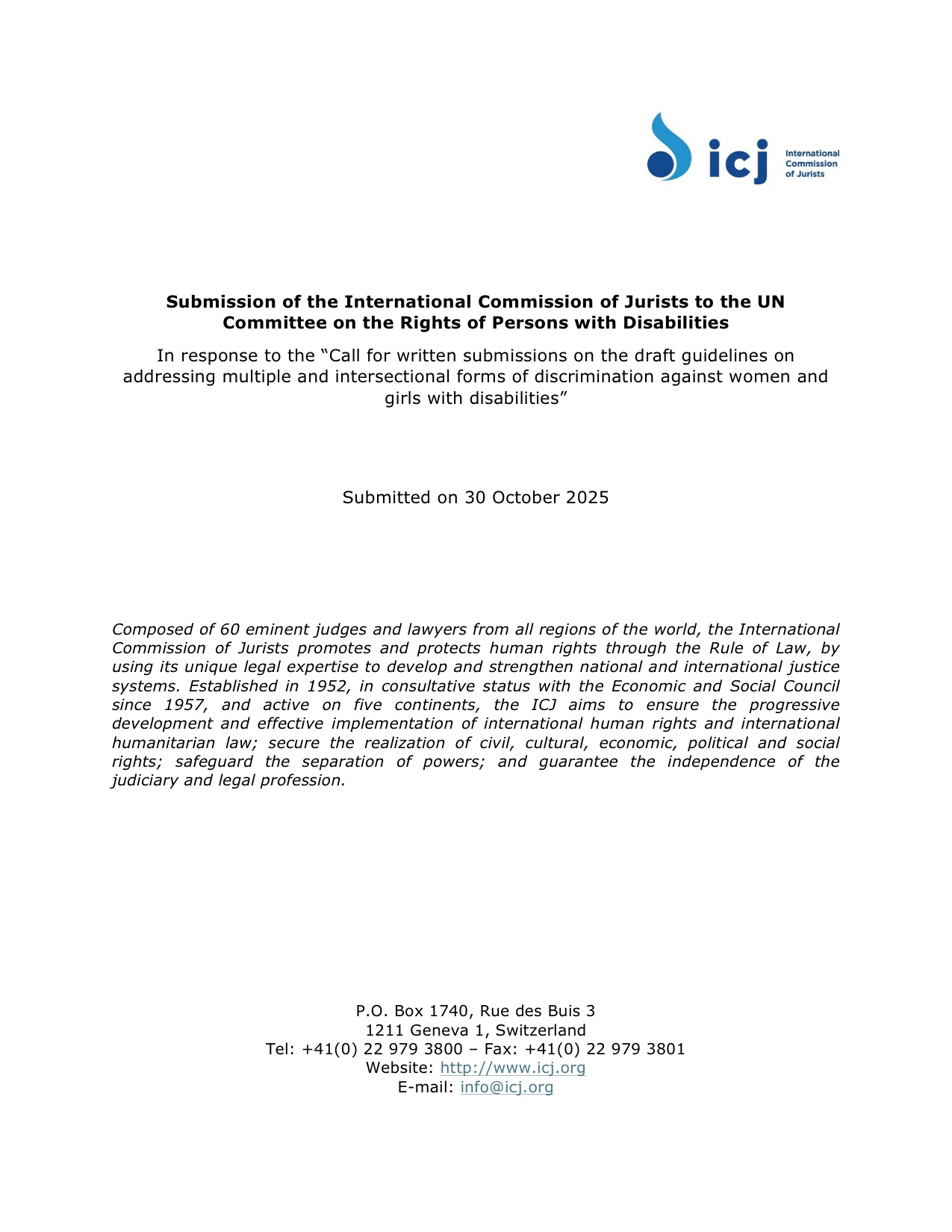Majority of children in Ukraine lack access to basic goods, services: UNICEF – AOL.com

Report on the Impact of the Ukrainian Conflict on Child Welfare and Sustainable Development Goals
Introduction: A Crisis in Sustainable Development
A recent UNICEF report highlights a severe regression in the well-being of children in Ukraine, directly undermining multiple United Nations Sustainable Development Goals (SDGs). More than three years into the conflict, the situation has escalated into a profound humanitarian crisis, with children bearing the most significant burden. This report analyzes the findings through the lens of the SDGs, demonstrating the conflict’s devastating impact on progress toward a sustainable and equitable future.
Analysis of Material Deprivation and Core SDGs
The conflict has caused a dramatic increase in material deprivation, directly impacting foundational SDGs related to poverty, hunger, and basic amenities.
SDG 1: No Poverty & SDG 2: Zero Hunger
- Approximately 70% of children in Ukraine, numbering around 3.5 million, now lack access to basic goods and services, a condition defined as material deprivation.
- This figure represents a four-fold increase from the 18% recorded in 2021, prior to the full-scale invasion, indicating a catastrophic reversal of progress on SDG 1.
- Specific deprivations cited include a lack of adequate and nutritious food, directly challenging the objectives of SDG 2.
SDG 6: Clean Water and Sanitation
- The conflict has severely damaged essential infrastructure, compromising access to basic services.
- One-third of Ukrainian children currently reside in homes without a functioning water supply or sewage system, a direct contravention of the targets set by SDG 6.
Impact on Health, Well-being, and Community Safety
The war’s effects extend beyond material needs, inflicting deep and lasting damage on the physical and mental health of children, as well as the safety of their communities.
SDG 3: Good Health and Well-being
- Physical Health and Safety: Since February 2022, over 2,700 children have been killed or maimed. The destruction of healthcare facilities prevents injured children from receiving necessary medical care and evacuation.
- Mental Health: There is a critical and growing need for psychosocial support to help children process the trauma of war. UNICEF emphasizes that providing safe spaces and professional support is essential for recovery, aligning with the mental health component of SDG 3.
SDG 11: Sustainable Cities and Communities
- Continuous attacks on residential areas, schools, and health facilities have rendered communities unsafe and unsustainable.
- Nearly half of the children in the country lack access to a safe area for play, either at home or outside, which is crucial for child development and a key aspect of creating inclusive and safe community spaces as envisioned by SDG 11.
Overarching Implications for Peace and Justice
SDG 16: Peace, Justice and Strong Institutions
The ongoing conflict is a fundamental violation of SDG 16, which aims to promote peaceful and inclusive societies. The targeting of civilian infrastructure and the resulting humanitarian crisis demonstrate a complete breakdown of peace and justice. The data indicates that without a ceasefire and a return to peaceful resolution, the negative trends will continue, further eroding the institutions necessary for a stable society and making the achievement of all other SDGs in the region impossible.
SDGs Addressed or Connected to the Issues Highlighted in the Article
-
SDG 1: No Poverty
- The article directly addresses this goal by highlighting the massive increase in “material deprivation” among children in Ukraine. It states that 70% of children, or 3.5 million, lack access to “basic goods and services, such as adequate food or shelter,” which are fundamental dimensions of poverty.
-
SDG 2: Zero Hunger
- The goal of ending hunger is relevant as the article explicitly mentions that children lack access to “adequate food” and “nutritious food” as part of the material deprivation they face.
-
SDG 3: Good Health and Well-being
- This goal is central to the article. It discusses the physical and mental health impacts of the war, citing the “destruction of health care infrastructure,” children being “killed or maimed,” the inability to get medical care for injuries, and the critical need for “mental health support” and “psychosocial support.”
-
SDG 4: Quality Education
- The article connects to this goal by stating that “schools” are among the infrastructure being destroyed by “continued and relentless attacks.” This destruction directly undermines the provision of safe and effective learning environments for children.
-
SDG 6: Clean Water and Sanitation
- This goal is explicitly addressed with the statistic that “one-third of children in Ukraine live in homes without a functioning water supply and sewage,” pointing to a severe regression in access to basic sanitation and water services.
-
SDG 11: Sustainable Cities and Communities
- The article relates to this goal by describing the destruction of essential urban and community infrastructure, including “homes,” “schools,” and “health care facilities.” It also notes that “nearly half of children in the country do not have access to an area to play,” which impacts the safety and inclusivity of communities.
-
SDG 16: Peace, Justice and Strong Institutions
- The entire article is framed by the context of the “ongoing war with Russia,” which is a fundamental failure of peace. It highlights the direct consequences of conflict, such as “continued and relentless attacks,” children being “killed or maimed,” and the use of “missiles and drones,” all of which are antithetical to the goal of promoting peaceful and inclusive societies.
Specific Targets Under Those SDGs
-
SDG 1: No Poverty
- Target 1.2: By 2030, reduce at least by half the proportion of men, women and children of all ages living in poverty in all its dimensions. The article shows a severe negative trend, with the proportion of children in “material deprivation” increasing four-fold from 18% to 70%.
-
SDG 2: Zero Hunger
- Target 2.1: By 2030, end hunger and ensure access by all people, in particular the poor and people in vulnerable situations… to safe, nutritious and sufficient food. The article indicates this target is not being met, as “nutritious food” is listed as a basic need that children are deprived of.
-
SDG 3: Good Health and Well-being
- Target 3.8: Achieve universal health coverage… and access to quality essential health-care services. The article demonstrates a collapse in this area, citing the “destruction of health care infrastructure” and the fact that “many children have not been able to get the care they need for injuries.”
-
SDG 4: Quality Education
- Target 4.a: Build and upgrade education facilities… and provide safe, non-violent, inclusive and effective learning environments for all. The mention of attacks on “schools” directly contravenes this target.
-
SDG 6: Clean Water and Sanitation
- Target 6.1: By 2030, achieve universal and equitable access to safe and affordable drinking water for all. The article shows a failure to meet this target, as “one-third of children in Ukraine live in homes without a functioning water supply.”
-
SDG 11: Sustainable Cities and Communities
- Target 11.1: By 2030, ensure access for all to adequate, safe and affordable housing and basic services. The destruction of “homes” and lack of “shelter” are direct setbacks to this target.
- Target 11.5: By 2030, significantly reduce the number of deaths and the number of people affected… by disasters… with a focus on protecting… people in vulnerable situations. The war, as a man-made disaster, is causing deaths and injuries, as noted by the casualties from a recent air attack.
-
SDG 16: Peace, Justice and Strong Institutions
- Target 16.1: Significantly reduce all forms of violence and related death rates everywhere. The article’s content, focusing on an active war with casualties, is in direct opposition to this target.
- Target 16.2: End abuse, exploitation, trafficking and all forms of violence against and torture of children. The fact that “More than 2,700 children have been killed or maimed” is a stark indicator of the failure to protect children from violence.
Indicators Mentioned or Implied in the Article
-
SDG 1: No Poverty
- Indicator: The proportion of children experiencing “material deprivation” is stated as “70%,” up from 18% in 2021. This serves as a direct measure of poverty in its various dimensions.
-
SDG 3: Good Health and Well-being
- Indicator: A specific number of child casualties is provided: “More than 2,700 children have been killed or maimed since February 2022.”
- Indicator: The need for “mental health support and psychosocial support” is mentioned, implying a high prevalence of mental health issues among children affected by war.
-
SDG 6: Clean Water and Sanitation
- Indicator: A precise statistic is given: “one-third of children in Ukraine live in homes without a functioning water supply and sewage.”
-
SDG 11: Sustainable Cities and Communities
- Indicator: The number of casualties from a single attack is reported: “At least two were killed and 22 others were injured.”
- Indicator: A specific statistic on access to recreational space is provided: “nearly half of children in the country do not have access to an area to play at home or outside.”
-
SDG 16: Peace, Justice and Strong Institutions
- Indicator: The number of child casualties (“more than 2,700 killed or maimed”) serves as a direct indicator of violence against children.
- Indicator: The frequency of attacks is implied with data on recent strikes: “The first 10 days of July have already seen Russia launch 2,464 drones and 58 missiles into Ukraine.”
Table of SDGs, Targets, and Indicators
| SDGs | Targets | Indicators |
|---|---|---|
| SDG 1: No Poverty | 1.2: Reduce poverty in all its dimensions. | 70% of children experience “material deprivation,” a four-fold increase from 18% in 2021. |
| SDG 2: Zero Hunger | 2.1: End hunger and ensure access to safe, nutritious food. | Lack of access to “adequate food” or “nutritious food” is a component of the material deprivation affecting 70% of children. |
| SDG 3: Good Health and Well-being | 3.8: Achieve universal health coverage and access to quality essential health-care services. | “More than 2,700 children have been killed or maimed.” “Destruction of health care infrastructure.” Critical need for “mental health support.” |
| SDG 4: Quality Education | 4.a: Build and upgrade education facilities to provide safe learning environments. | “Continued and relentless attacks” on “schools.” |
| SDG 6: Clean Water and Sanitation | 6.1: Achieve universal and equitable access to safe drinking water. | “One-third of children in Ukraine live in homes without a functioning water supply and sewage.” |
| SDG 11: Sustainable Cities and Communities | 11.1: Ensure access to adequate, safe housing. 11.5: Reduce deaths and people affected by disasters. |
Destruction of “homes.” “Nearly half of children… do not have access to an area to play.” 2 killed and 22 injured in a recent attack. |
| SDG 16: Peace, Justice and Strong Institutions | 16.1: Reduce all forms of violence and related death rates. 16.2: End abuse and violence against children. |
“More than 2,700 children have been killed or maimed.” 2,464 drones and 58 missiles launched in the first 10 days of July. |
Source: aol.com

What is Your Reaction?
 Like
0
Like
0
 Dislike
0
Dislike
0
 Love
0
Love
0
 Funny
0
Funny
0
 Angry
0
Angry
0
 Sad
0
Sad
0
 Wow
0
Wow
0


















-1920w.png?#)






















;Resize=805#)





































